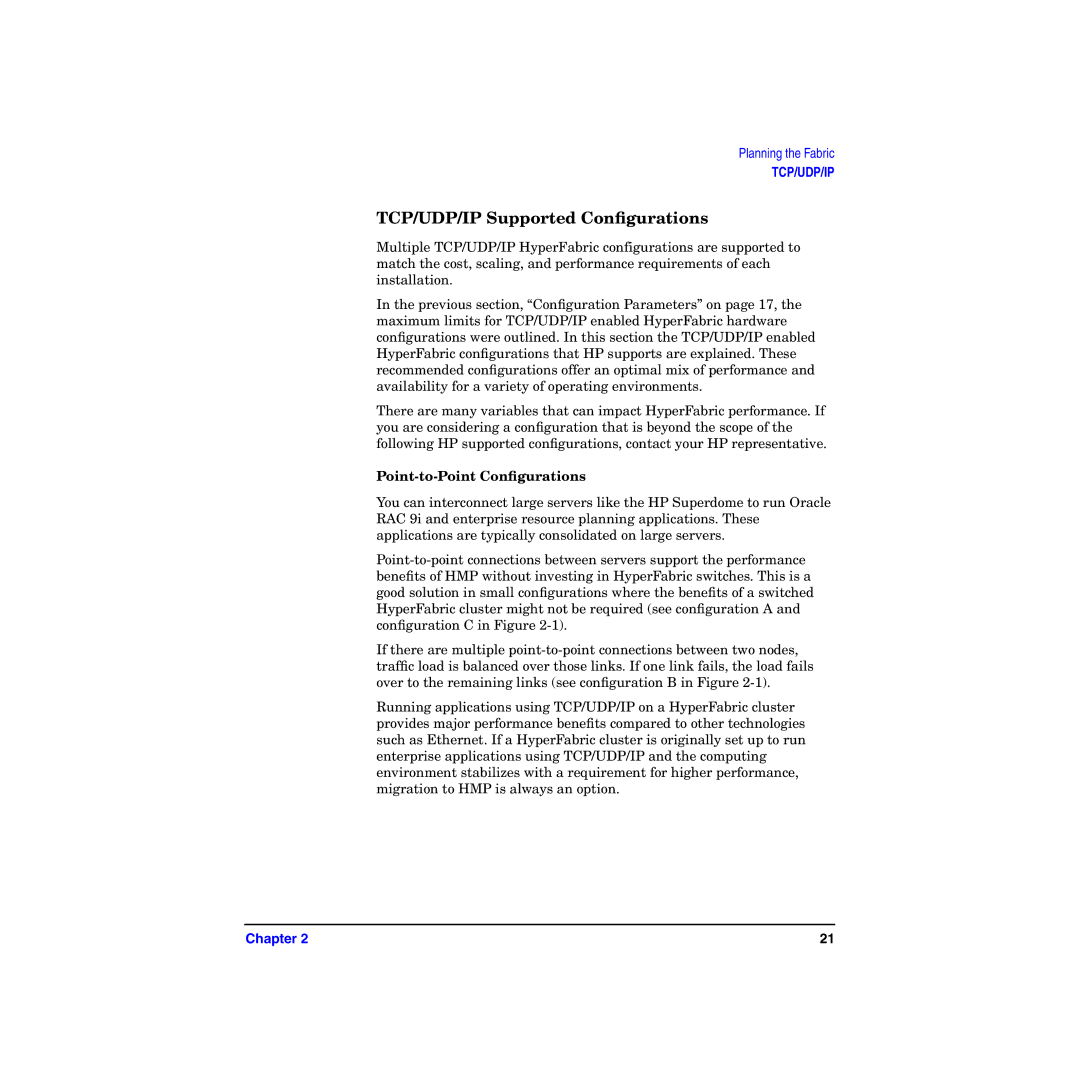Planning the Fabric
TCP/UDP/IP
TCP/UDP/IP Supported Configurations
Multiple TCP/UDP/IP HyperFabric configurations are supported to match the cost, scaling, and performance requirements of each installation.
In the previous section, “Configuration Parameters” on page 17, the maximum limits for TCP/UDP/IP enabled HyperFabric hardware configurations were outlined. In this section the TCP/UDP/IP enabled HyperFabric configurations that HP supports are explained. These recommended configurations offer an optimal mix of performance and availability for a variety of operating environments.
There are many variables that can impact HyperFabric performance. If you are considering a configuration that is beyond the scope of the following HP supported configurations, contact your HP representative.
Point-to-Point Configurations
You can interconnect large servers like the HP Superdome to run Oracle RAC 9i and enterprise resource planning applications. These applications are typically consolidated on large servers.
If there are multiple
Running applications using TCP/UDP/IP on a HyperFabric cluster provides major performance benefits compared to other technologies such as Ethernet. If a HyperFabric cluster is originally set up to run enterprise applications using TCP/UDP/IP and the computing environment stabilizes with a requirement for higher performance, migration to HMP is always an option.
Chapter 2 | 21 |
